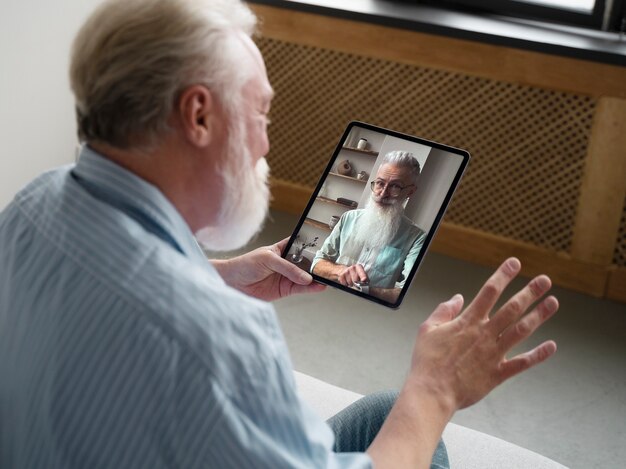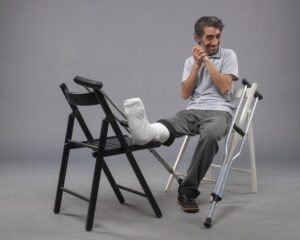Remote Patient Monitoring (RPM) is increasingly becoming an essential tool in healthcare, allowing for the continuous monitoring of patients outside traditional clinical settings. As the demand for RPM grows, healthcare providers and patients alike are keen to understand whether insurance companies, such as UnitedHealthcare (UHC), cover these services.

What is Remote Patient Monitoring (RPM)?
Remote Patient Monitoring involves the use of digital technologies to collect medical and health-related data from individuals in one location and electronically transmit that information to healthcare providers in a different location for assessment and recommendations. This can include monitoring chronic conditions like diabetes, heart disease, or hypertension, and is particularly valuable in managing patients with ongoing care needs.
UHC’s Stance on Remote Patient Monitoring
UnitedHealthcare (UHC), one of the largest health insurance providers in the United States, recognizes the importance of RPM in modern healthcare. However, the coverage for RPM services can vary depending on the specific plan, the state in which the policyholder resides, and the medical necessity of the service.
Coverage for RPM under UHC Plans
- Medicare Advantage Plans: UHC offers Medicare Advantage plans that may cover RPM services. In 2020, CMS (Centers for Medicare & Medicaid Services) expanded the reimbursement for RPM under Medicare, which many Medicare Advantage plans, including those offered by UHC, have adopted. These services are typically covered when they are deemed medically necessary, meaning the patient’s condition warrants regular monitoring and can benefit from RPM.
- Commercial Insurance Plans: UHC’s commercial insurance plans also offer coverage for RPM, though the specifics can vary. Coverage is often dependent on the individual policy, and pre-authorization may be required. UHC may cover RPM services if they are prescribed by a healthcare provider, particularly for managing chronic conditions that require regular monitoring.
- State-Specific Variations: UHC’s coverage for RPM may also be influenced by state-specific regulations. Some states have mandated that insurance companies cover telehealth and RPM services, which can affect UHC’s coverage policies in those regions.
Billing and Reimbursement
For healthcare providers, understanding the billing codes and reimbursement policies for RPM is crucial. UHC generally follows the guidelines set by CMS for RPM billing, which includes specific CPT (Current Procedural Terminology) codes such as:
- 99453: Initial setup and patient education on the use of RPM devices.
- 99454: Supply of devices and daily monitoring for 30 days.
- 99457: 20 minutes of clinical staff/physician/other qualified healthcare professional time in a calendar month requiring interactive communication with the patient.
- 99458: Additional 20 minutes of RPM services.
Healthcare providers should ensure that the RPM services they offer align with UHC’s guidelines and that all documentation is accurate to facilitate reimbursement.
Challenges and Considerations
While UHC does cover RPM in many cases, there are potential challenges to consider:
- Pre-Authorization: Some UHC plans may require pre-authorization for RPM services, which means the healthcare provider must demonstrate the medical necessity of the service before it is provided.
- Patient Costs: Depending on the plan, patients may be responsible for co-pays, deductibles, or coinsurance for RPM services. It’s important for patients to verify their out-of-pocket costs with UHC before initiating RPM.
- Plan-Specific Details: Coverage can vary significantly between different UHC plans. It’s advisable for patients and providers to review the specific policy details or contact UHC directly to confirm coverage.
Conclusion
UnitedHealthcare does pay for Remote Patient Monitoring in many cases, especially when it is deemed medically necessary. However, the extent of coverage can vary based on the type of insurance plan, the state regulations, and the specific medical needs of the patient. Both patients and healthcare providers should carefully review the terms of the specific UHC plan in question to understand the coverage and potential costs associated with RPM services.
FAQs: UnitedHealthcare (UHC) and Remote Patient Monitoring (RPM)
1. Does UnitedHealthcare (UHC) cover Remote Patient Monitoring (RPM)?
- Answer: Yes, UHC covers RPM in many cases, particularly when it is medically necessary. Coverage can vary depending on the type of plan (e.g., Medicare Advantage, commercial insurance) and state-specific regulations. It’s advisable to check the specific policy details to confirm coverage.
2. Which UHC plans cover RPM?
- Answer: UHC’s Medicare Advantage plans often cover RPM services, following the guidelines set by CMS. Some commercial insurance plans may also cover RPM, but the coverage specifics can vary, and pre-authorization may be required.
3. What conditions are commonly monitored through RPM under UHC?
- Answer: RPM is commonly used to monitor chronic conditions such as diabetes, hypertension, heart disease, and COPD. UHC is more likely to cover RPM if it is used to manage these or similar chronic conditions where regular monitoring is essential.
4. Are there any costs for patients when using RPM with UHC?
- Answer: Depending on the UHC plan, patients may have to pay co-pays, deductibles, or coinsurance for RPM services. It’s important to review the plan’s terms to understand any out-of-pocket costs.
5. Does UHC require pre-authorization for RPM services?
- Answer: In some cases, yes. UHC may require pre-authorization for RPM services, meaning that the healthcare provider must demonstrate the medical necessity of RPM before the service is approved.
6. What are the billing codes used for RPM reimbursement under UHC?
- Answer: UHC generally follows CMS guidelines for RPM billing. The common CPT codes used include:
- 99453: Initial setup and patient education on RPM devices.
- 99454: Supply of devices and daily monitoring for 30 days.
- 99457: 20 minutes of clinical staff/physician time in a calendar month, including interactive communication with the patient.
- 99458: Additional 20 minutes of RPM services.
7. How can I verify if my UHC plan covers RPM?
- Answer: You can verify RPM coverage by reviewing your UHC policy documents or contacting UHC’s customer service directly. It’s essential to ask about specific coverage details, including any pre-authorization requirements and out-of-pocket costs.
8. Are there any state-specific regulations affecting UHC’s coverage of RPM?
- Answer: Yes, some states have regulations that mandate insurance companies to cover telehealth and RPM services. These regulations can influence UHC’s coverage policies depending on the state in which the policyholder resides.
9. What should healthcare providers do to ensure RPM services are reimbursed by UHC?
- Answer: Healthcare providers should ensure that RPM services are medically necessary and well-documented. It’s also important to use the correct billing codes and follow any pre-authorization procedures required by UHC.
10. Can RPM services be used for short-term monitoring under UHC plans?
- Answer: RPM is typically intended for ongoing monitoring of chronic conditions, but short-term monitoring may be covered if it’s deemed medically necessary. Providers should consult UHC for specific guidelines regarding short-term use.



